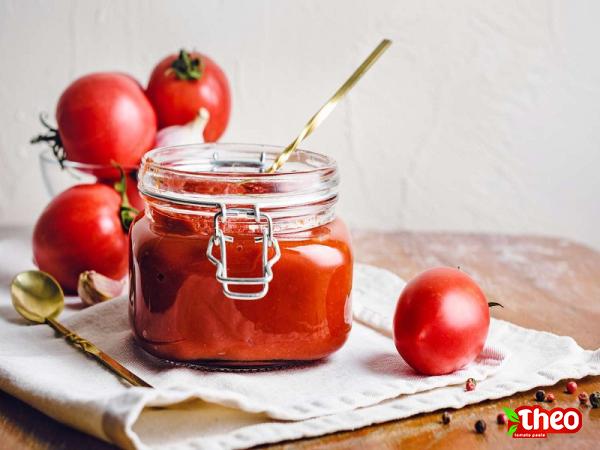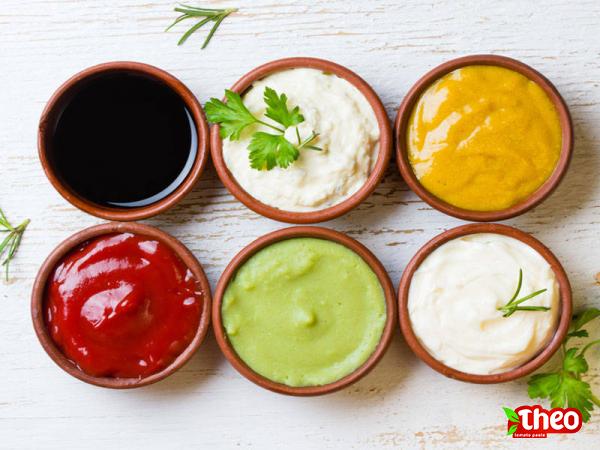Tomato pasta sauce with olives is a delicious and flavorful addition to any pasta dish. It combines the rich and tangy taste of tomatoes with the briny and salty flavors of olives, creating a harmonious blend that elevates the overall taste of the sauce. One of the key ingredients in tomato pasta sauce with olives is, of course, tomatoes. Tomatoes are a versatile fruit that are widely used in cooking due to their natural sweetness and vibrant color. They are also packed with essential vitamins and minerals, making them a healthy addition to any dish. To make the sauce, the tomatoes are typically cooked down until they break down and release their juices. This helps to concentrate their flavors and create a thick and rich sauce. Some recipes call for fresh tomatoes that are peeled and seeded, while others use canned tomatoes for convenience. Olives, on the other hand, add a unique and distinctive taste to the sauce. They come in a variety of types, such as black, green, or Kalamata olives, each offering its own distinct flavor profile. Olives are known for their briny and salty taste, which pairs wonderfully with the sweetness of the tomatoes. To incorporate olives into the sauce, they can be pitted and roughly chopped or sliced. This allows the flavors of the olives to infuse into the sauce, enhancing its overall taste. The olives also add a nice texture to the sauce, providing a bit of bite and crunch. In addition to tomatoes and olives, other ingredients such as onions, garlic, herbs, and spices are often added to tomato pasta sauce with olives to further enhance its flavor. Onions and garlic provide a savory base, while herbs like basil, oregano, and thyme add a fragrant and aromatic touch. Spices like red pepper flakes or black pepper can also be added to give the sauce a bit of heat and complexity. The cooking process for tomato pasta sauce with olives is relatively simple. After sautéing the onions and garlic in olive oil until they are soft and translucent, the tomatoes are added and cooked down until they break apart. This can take anywhere from 20 to 30 minutes, depending on the desired consistency of the sauce. Once the tomatoes have cooked down, the olives, herbs, and spices are added to the sauce. The mixture is then simmered for a few more minutes to allow the flavors to meld together. At this stage, additional seasonings or ingredients can be added to tailor the sauce to personal preference. Tomato pasta sauce with olives can be used in a variety of pasta dishes. It pairs particularly well with hearty pastas like penne, rigatoni, or spaghetti. Simply toss the cooked pasta in the sauce until it is evenly coated, and serve it with a sprinkling of grated Parmesan cheese and fresh herbs on top.

tomato paste
 Apart from pasta, tomato pasta sauce with olives can also be used as a base for other dishes. It can be used as a topping for homemade pizzas, a sauce for baked chicken or seafood, or even as a spread for sandwiches or wraps. Its versatile nature makes it an excellent condiment to keep on hand in the kitchen. In conclusion, tomato pasta sauce with olives is a delicious combination of sweet and tangy tomatoes with briny and salty olives. Its rich and flavorful taste can elevate any pasta dish, providing a satisfying and satisfying culinary experience. Whether used as a sauce for pasta or as a base for other dishes, tomato pasta sauce with olives is sure to be a hit.Title: The Business Potential of Tomato Pasta Sauce with Olives Introduction: Tomato pasta sauce with olives isn’t just a beloved dish among food enthusiasts but also presents an opportunity for businesses to tap into a lucrative market. In this article, we will explore the business potential of tomato pasta sauce with olives and discuss various aspects that entrepreneurs can consider to capitalize on its popularity. 1. Market Analysis: Before venturing into the tomato pasta sauce with olives business, it is crucial to conduct a market analysis. This involves assessing the demand for such products in the target market, identifying the target audience, and understanding the preferences and trends related to pasta sauces. By gathering relevant market data, businesses can make informed decisions regarding production, pricing, and marketing strategies. 2. Product Differentiation: To stand out in a competitive market, businesses can focus on product differentiation. This can be achieved by offering unique variations of tomato pasta sauce with olives, such as incorporating different types of olives, adding additional ingredients like capers or sun-dried tomatoes, or creating specialty flavors. Providing a diverse range of options can attract a wider customer base and cater to various taste preferences and dietary requirements.
Apart from pasta, tomato pasta sauce with olives can also be used as a base for other dishes. It can be used as a topping for homemade pizzas, a sauce for baked chicken or seafood, or even as a spread for sandwiches or wraps. Its versatile nature makes it an excellent condiment to keep on hand in the kitchen. In conclusion, tomato pasta sauce with olives is a delicious combination of sweet and tangy tomatoes with briny and salty olives. Its rich and flavorful taste can elevate any pasta dish, providing a satisfying and satisfying culinary experience. Whether used as a sauce for pasta or as a base for other dishes, tomato pasta sauce with olives is sure to be a hit.Title: The Business Potential of Tomato Pasta Sauce with Olives Introduction: Tomato pasta sauce with olives isn’t just a beloved dish among food enthusiasts but also presents an opportunity for businesses to tap into a lucrative market. In this article, we will explore the business potential of tomato pasta sauce with olives and discuss various aspects that entrepreneurs can consider to capitalize on its popularity. 1. Market Analysis: Before venturing into the tomato pasta sauce with olives business, it is crucial to conduct a market analysis. This involves assessing the demand for such products in the target market, identifying the target audience, and understanding the preferences and trends related to pasta sauces. By gathering relevant market data, businesses can make informed decisions regarding production, pricing, and marketing strategies. 2. Product Differentiation: To stand out in a competitive market, businesses can focus on product differentiation. This can be achieved by offering unique variations of tomato pasta sauce with olives, such as incorporating different types of olives, adding additional ingredients like capers or sun-dried tomatoes, or creating specialty flavors. Providing a diverse range of options can attract a wider customer base and cater to various taste preferences and dietary requirements.
Specifications of tomato paste
 3. Sourcing Quality Ingredients: The success of tomato pasta sauce with olives largely depends on the quality of its ingredients. Businesses should prioritize sourcing high-quality tomatoes and olives to ensure a superior product. Partnering with local farmers and suppliers can not only guarantee fresh and flavorful ingredients but also support the local economy and promote sustainability. 4. Production and Packaging: Efficient production and packaging processes are vital for ensuring consistent quality and meeting customer demand. Investing in modern production equipment can increase output and minimize production time. Additionally, businesses should consider eco-friendly packaging options that align with the growing consumer preference for sustainable choices. 5. Branding and Marketing Strategy: Establishing a strong brand presence is crucial for success in the tomato pasta sauce with olives market. A well-crafted branding strategy, including a memorable brand name, logo, and packaging design, can help businesses differentiate themselves from competitors. Implementing a targeted marketing strategy, using both traditional and digital channels, is essential to reach the desired audience and create brand awareness. 6. Distribution Channels: Identifying the most effective distribution channels is essential for ensuring that tomato pasta sauce with olives reaches the target market efficiently. Local grocery stores, specialty food retailers, and online platforms can all be viable distribution channels. Building relationships with distributors, wholesalers, and retailers can help expand market reach and increase sales. 7. Culinary Partnerships: Incorporating culinary partnerships can further enhance the business potential of tomato pasta sauce with olives. Collaborating with restaurants, cafés, or catering services can create opportunities for cross-promotion and increase brand visibility. Developing signature recipes or offering exclusive menu items featuring the sauce can attract food enthusiasts and generate additional revenue streams.
3. Sourcing Quality Ingredients: The success of tomato pasta sauce with olives largely depends on the quality of its ingredients. Businesses should prioritize sourcing high-quality tomatoes and olives to ensure a superior product. Partnering with local farmers and suppliers can not only guarantee fresh and flavorful ingredients but also support the local economy and promote sustainability. 4. Production and Packaging: Efficient production and packaging processes are vital for ensuring consistent quality and meeting customer demand. Investing in modern production equipment can increase output and minimize production time. Additionally, businesses should consider eco-friendly packaging options that align with the growing consumer preference for sustainable choices. 5. Branding and Marketing Strategy: Establishing a strong brand presence is crucial for success in the tomato pasta sauce with olives market. A well-crafted branding strategy, including a memorable brand name, logo, and packaging design, can help businesses differentiate themselves from competitors. Implementing a targeted marketing strategy, using both traditional and digital channels, is essential to reach the desired audience and create brand awareness. 6. Distribution Channels: Identifying the most effective distribution channels is essential for ensuring that tomato pasta sauce with olives reaches the target market efficiently. Local grocery stores, specialty food retailers, and online platforms can all be viable distribution channels. Building relationships with distributors, wholesalers, and retailers can help expand market reach and increase sales. 7. Culinary Partnerships: Incorporating culinary partnerships can further enhance the business potential of tomato pasta sauce with olives. Collaborating with restaurants, cafés, or catering services can create opportunities for cross-promotion and increase brand visibility. Developing signature recipes or offering exclusive menu items featuring the sauce can attract food enthusiasts and generate additional revenue streams.
buy tomato paste
 8. Product Sampling and Tastings: Sampling and tastings are effective strategies for introducing your tomato pasta sauce with olives to potential customers. Participating in food festivals, farmer’s markets, or hosting in-store tasting events can create opportunities for direct customer interaction. This allows customers to experience the product firsthand, build trust, and encourage future purchases. 9. E-commerce and Online Presence: The digital landscape offers tremendous potential for businesses in the food industry. Establishing an online presence through a user-friendly website and active social media presence can help boost brand visibility and engage with a broader audience. Implementing e-commerce capabilities allows customers to conveniently purchase the tomato pasta sauce with olives from anywhere, expanding market reach beyond local boundaries. 10. Quality Control and Food Safety: Maintaining stringent quality control measures and ensuring food safety is paramount to building a reputable brand. Following proper food processing and handling protocols, adhering to industry standards, and obtaining necessary certifications can instill trust in customers. Regularly conducting audits and consistently monitoring the production and packaging processes can minimize the risk of contamination and maintain product integrity. Conclusion: Tomato pasta sauce with olives presents a promising business opportunity for entrepreneurs willing to tap into the market’s potential. By conducting thorough market research, focusing on product differentiation, sourcing quality ingredients, implementing effective marketing strategies, and considering various distribution channels, businesses can position themselves for success in this vibrant industry. With proper planning and a commitment to delivering a high-quality product, tomato pasta sauce with olives has the potential to become a profitable and beloved offering for both consumers and aspiring business owners alike.
8. Product Sampling and Tastings: Sampling and tastings are effective strategies for introducing your tomato pasta sauce with olives to potential customers. Participating in food festivals, farmer’s markets, or hosting in-store tasting events can create opportunities for direct customer interaction. This allows customers to experience the product firsthand, build trust, and encourage future purchases. 9. E-commerce and Online Presence: The digital landscape offers tremendous potential for businesses in the food industry. Establishing an online presence through a user-friendly website and active social media presence can help boost brand visibility and engage with a broader audience. Implementing e-commerce capabilities allows customers to conveniently purchase the tomato pasta sauce with olives from anywhere, expanding market reach beyond local boundaries. 10. Quality Control and Food Safety: Maintaining stringent quality control measures and ensuring food safety is paramount to building a reputable brand. Following proper food processing and handling protocols, adhering to industry standards, and obtaining necessary certifications can instill trust in customers. Regularly conducting audits and consistently monitoring the production and packaging processes can minimize the risk of contamination and maintain product integrity. Conclusion: Tomato pasta sauce with olives presents a promising business opportunity for entrepreneurs willing to tap into the market’s potential. By conducting thorough market research, focusing on product differentiation, sourcing quality ingredients, implementing effective marketing strategies, and considering various distribution channels, businesses can position themselves for success in this vibrant industry. With proper planning and a commitment to delivering a high-quality product, tomato pasta sauce with olives has the potential to become a profitable and beloved offering for both consumers and aspiring business owners alike.




